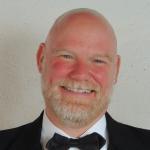Jeff Barnhart: Hal, this month’s column marks a thematic departure for us, but it is a subject about which I’ve given considerable thought over the years and I’d love to learn your take on it. As jazz musicians, we often find ourselves in situations where we are playing for listeners, dancers, or occasionally both during a show, set or concert, and the needs and desires of listeners and dancers are not always compatible.
A good band leader needs to be sensitive to, and aware of, the sort of gig and audience before which his/her band is appearing. Let’s begin with my asking you for your initial impressions involving this subject, and also whether you have a preference performing for either group of people?
Hal Smith: There is a Kid Ory record from 1957 on the Verve label titled Dance With Kid Ory…Or Just Listen. Playing for dancers and listeners is ideal, as far as I’m concerned. Still, I try to always remember that jazz was originally played for dancers. Unless the audience is sitting with arms folded, glaring at the band and waiting impatiently for some “hilarity” to ensue—I go easy on the fast tempos and long performances and do my best to keep the songs danceable.
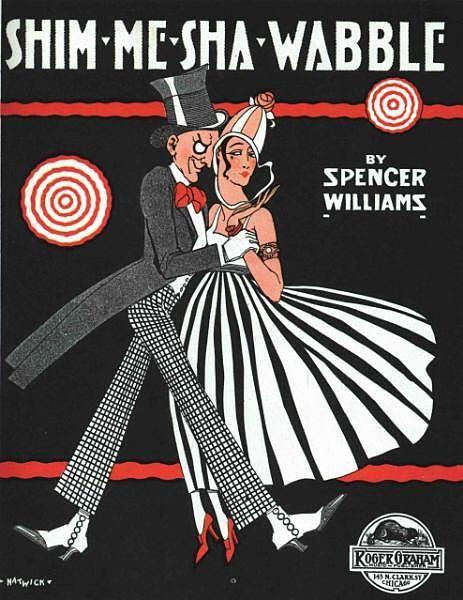 JB: Oh, man, you started us off in fine fashion, hitting many of the topics I hope to cover! I laughed out loud regarding your description of a certain situation in which I have found myself many times in the past (through no fault of mine…HAH!): bands that love fast tempi, like to stretch out tunes and, above all, have quite a bit of “hilarity!” While no-one was never able to argue with the popularity and success of those bands, there could sometimes be a clash between the band’s M.O. of presentation and the desires of some members of the audience.
JB: Oh, man, you started us off in fine fashion, hitting many of the topics I hope to cover! I laughed out loud regarding your description of a certain situation in which I have found myself many times in the past (through no fault of mine…HAH!): bands that love fast tempi, like to stretch out tunes and, above all, have quite a bit of “hilarity!” While no-one was never able to argue with the popularity and success of those bands, there could sometimes be a clash between the band’s M.O. of presentation and the desires of some members of the audience.
One particular group was ensemble based, but also had very gifted soloists. Not a bad place to be, except everyone in the band knew they were above-average soloists, so songs could sometimes stretch out to 10 or even 12 minutes in length—even the selections with breakneck tempos—and there were quite a few of those! As long as we kept the variety level high during a tune (varying solo order, breaking up into smaller groups within the tune, trading 4’s and 8’s, ensembles to break up solos: the choices are endless) the audience was usually quite receptive. Dancers, however…
I remember one festival where the organizers indicated they would love to have us back but we’d have to modify our act with less cutting up between tunes and shorter tunes to accommodate the dancers. While it proved difficult for a few of the musicians, it was a point well-taken, we made the necessary adjustments, were an even bigger hit the following year and, I think, became a better band.
Hal, you’ve spent a lot of time performing with groups that gear the repertoire and pace of their show to dancers. I’m sure you’ve also been in charge of programming some dance gigs. In addition to selecting the right tempo and keeping songs to a reasonable length, what other aspects do you, or the band with which you are working, take into consideration?
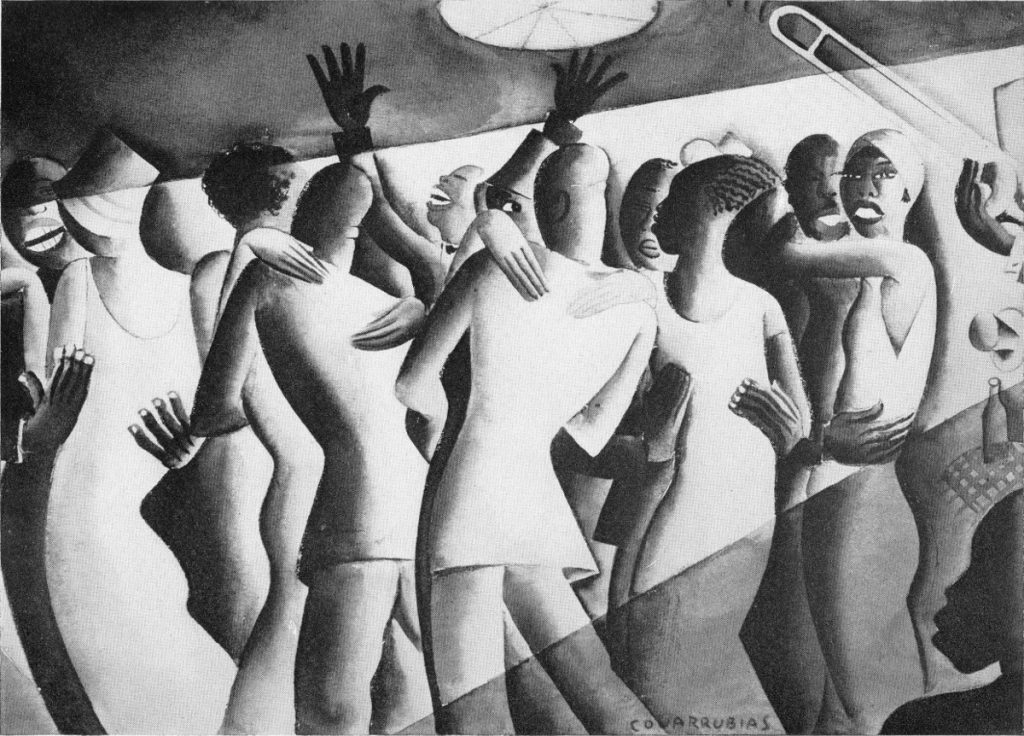
HS: I led a band on the West Coast that made exactly the kind of debut you hope for with a new group: packed rooms, thunderous applause (and standing ovations) and a full dance floor. It was the same situation when we returned to the festival the following year. But then we played a festival in another part of the country and ran into the exact opposite reaction. I tried kicking off brighter tempos and cueing extra solos and ensembles to get the listeners interested, but no soap. And, like you described, the dancers did not want to venture onto the floor because of the up-tempo numbers we were playing. Since that experience, I try to take all possible playing situations into account before lining up personnel, repertoire, and potential gigs.
JB: Spoken like an old pro, and lifer!! Can you elaborate a bit on your specs when preparing for a gig that will be primarily geared towards the dancing, vs. listening, crowd? For instance, are your tunes longer or shorter, does the tempo vary a lot during a set or is there a “sweet spot” within 10-20 metronome clicks where you try and keep the groove? I promise, I’m not about to start a rival band to sweep away any of your upcoming gigs (LOL!) but these details have always fascinated me as a performer. Any other insights to share?
HS: If I am going to play a new event—like a festival—I try to find out as much as possible about the audience and the room layouts ahead of time…Is it a “listening” audience? Older folks? Local swing dancers? Are the performance venues on the smaller side, with mostly theater style seating or have the organizers set up dance floors in each room? If I’m going to play a familiar venue or festival, I can generally figure out ahead of time how to program the sets. And once the band starts, of course I try to keep the groove close to where the tempo was kicked off.
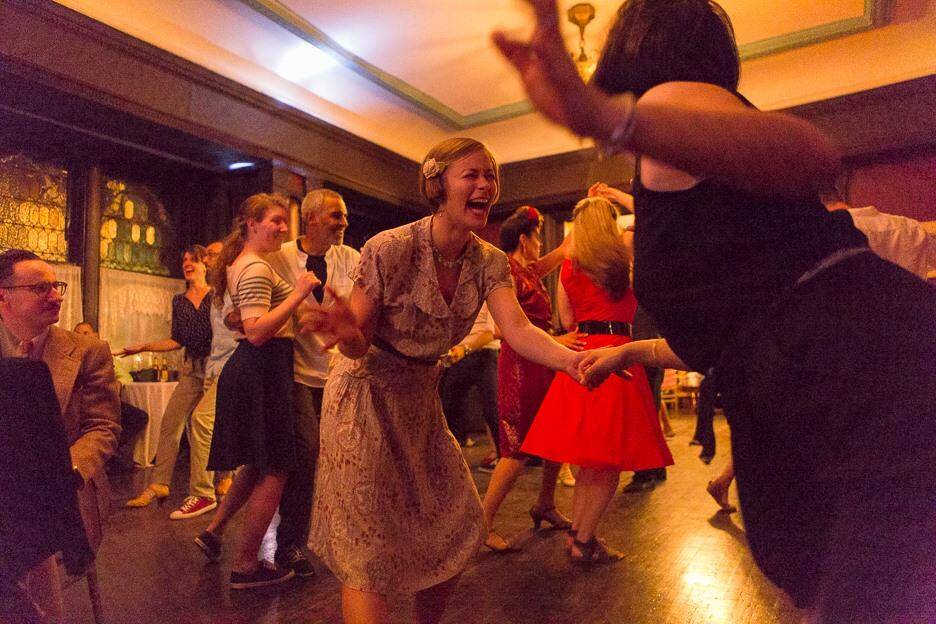
Playing for swing dancing is a whole different situation! Luckily, I have been able to work with some great dancers who are also organizers—like Rusty Frank, Joel Plys, Chance Bushman, Hilary Alexander, Deb Tindle, and Margie Adams. They have educated me about choosing tempos, tune length and general programming for dance events. Also, I have learned a lot by playing in bands led by Michael Gamble, Jonathan Stout, Brooks Prumo, Laura Windley, and Jonathan Doyle. Their bands were organized specifically to play for dancers. Playing with one of those bands in a huge ballroom and seeing hundreds of fantastic dancers moving to your music is definitely a rewarding experience!
Also, since I want my music to appeal to dancers as well as listeners, the tempos on my latest remote recording projects were chosen using beats per minute rather than by “feel.” Believe me: a band can crash and burn with dancers if the b.p.m. (beats per minute) is not just right!
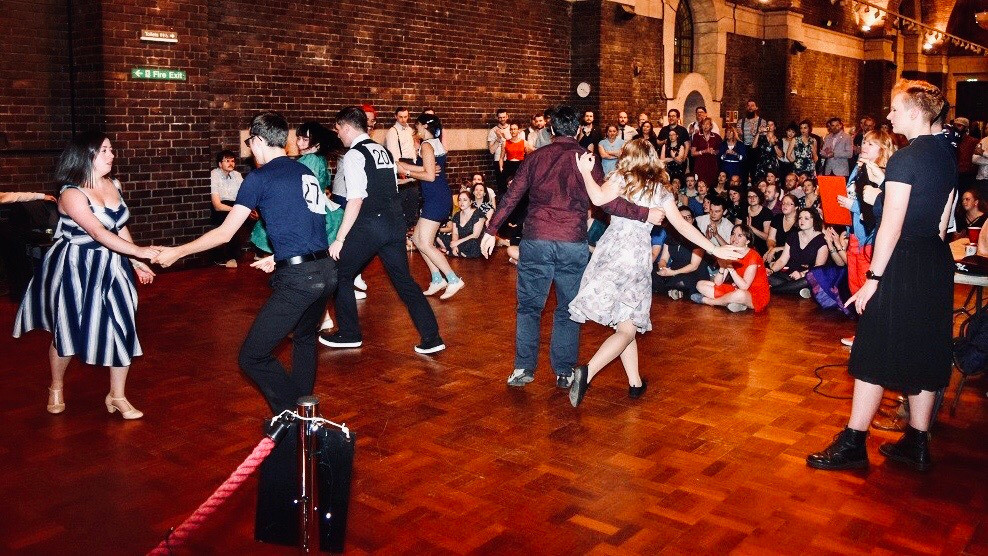
JB: Great insights, my friend. Young swing dancers and swing dance societies are providing work for a good number of bands across the country, and the world! I’ll add the names of a few East Coast dance band leaders, such as Paul Cosentino and the Gordons—Au and Webster—who are making a good living providing grooves for hoofers. Before we continue with exploring the modern dance scene, I’d love to briefly explore the historical relationship between dance and jazz.
While it’s agreed that dance and organized movement are antecedents to melodic music, the debate in terms of the relationship between dance and jazz music continues unabated. One school of thought suggests that early jazz music was influenced by dancers for whom the music was being played, while another avers that the dances developed throughout the early jazz age (and before) were the results of the sounds and rhythms the bands were producing.
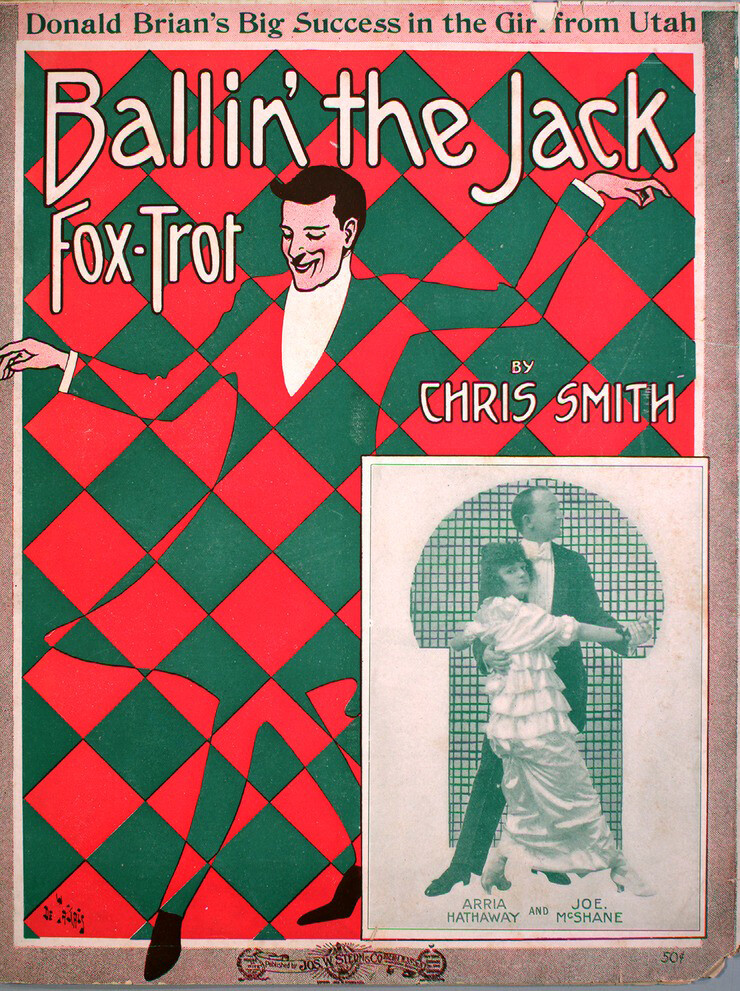
Examples in favor of either stance abound. For me, one of the most intriguing is Chris Smith’s biggest hit, “Ballin’ The Jack,” from 1913. Does the descriptive lyric outline an already existing dance, or did the tune blueprint a new step? IF the steps were already in place, was it called “Ballin’ The Jack” or do we take the narrator’s final declaration at face value (“That’s what I call Ballin’ The Jack”)?
Another example from 1913: James P. Johnson tells us he wrote his early piece “The Mule Walk” to represent the rhythms of moves and “wild and comical dances” (his words) exhibited by patrons of the Jungles Casino in Manhattan where he was playing at the time. Then, Johnson had a huge hit in 1923 when he composed “The Charleston,” the song that came to represent, but most likely not create—there is no description of the actual steps in the lyrics—that 1920’s dance craze.
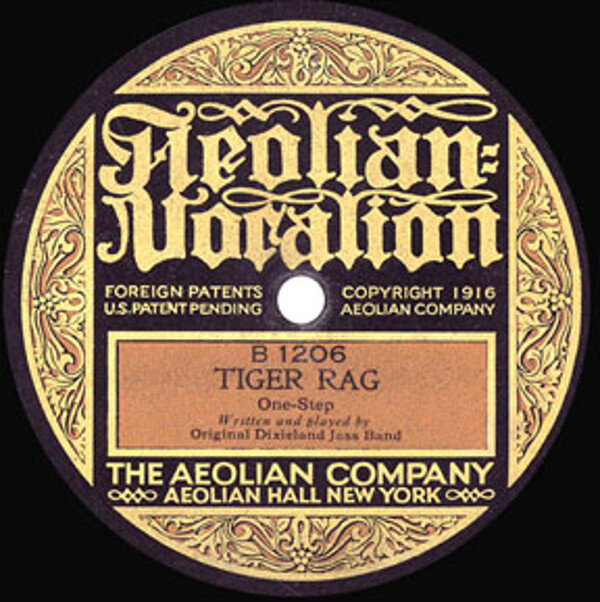 In 1917, again in NYC, the Original Dixieland Jazz Band frightened patrons off the floor of the Paradise Ballroom in the new Reisenweber Restaurant with their puckish anarchy until the emcee assured them, “Ladies and Gentlemen, this music is for dancing!” A trickle of brave couples became a wave of enthusiastic high-steppers as the night progressed. One thing we know about the earliest music of the ODJB (at least from the records) was that the bulk of their repertoire was performed in a rather uniform tempo (upbeat) and volume (loud). Presumably, since the members of the ODJB really did not improvise prolifically, the live versions of their tunes were not much longer than were their recordings.
In 1917, again in NYC, the Original Dixieland Jazz Band frightened patrons off the floor of the Paradise Ballroom in the new Reisenweber Restaurant with their puckish anarchy until the emcee assured them, “Ladies and Gentlemen, this music is for dancing!” A trickle of brave couples became a wave of enthusiastic high-steppers as the night progressed. One thing we know about the earliest music of the ODJB (at least from the records) was that the bulk of their repertoire was performed in a rather uniform tempo (upbeat) and volume (loud). Presumably, since the members of the ODJB really did not improvise prolifically, the live versions of their tunes were not much longer than were their recordings.
Hal, do you have any comments regarding my thumb-nail discussion of the relationship of dance to jazz, or some other examples you’d like to share?
HS: I know of “Ballin’ The Jack” as a term used by old-time railroaders to describe a fast-moving train. (They also made reference to fast trains “pickin’ ’em up and layin’ ’em down”—a term used to describe high-stepping dancers, such as those mentioned in the lyrics of “Cake Walking Babies From Home.”)
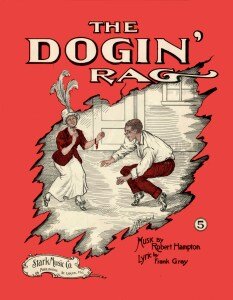 There are references to several arcane dance steps in Robert Hampton’s “The Dogin’ Rag,” from the same era as “Ballin’ The Jack.” There are other songs written slightly later like “Dancing The Jelly Roll,” “Tackin’ ‘Em Down,” and the jazz standard “Shim-Me-Sha-Wabble” which include detailed instructions on how to do the steps. But who has actually seen anyone perform those dances?
There are references to several arcane dance steps in Robert Hampton’s “The Dogin’ Rag,” from the same era as “Ballin’ The Jack.” There are other songs written slightly later like “Dancing The Jelly Roll,” “Tackin’ ‘Em Down,” and the jazz standard “Shim-Me-Sha-Wabble” which include detailed instructions on how to do the steps. But who has actually seen anyone perform those dances?
Regarding the ODJB: Even their first records were marked “For Dancing.” And one of the sides even specified a particular dance in the title: “Dixie Jass Band One-Step!” We know that there was a dance from this era called the “shimmy” (as in “I Wish I Could Shimmy Like My Sister Kate”). But what to make of the record label for King Oliver’s “New Orleans Stomp” that describes it as a “Shimmy One-Step!?”
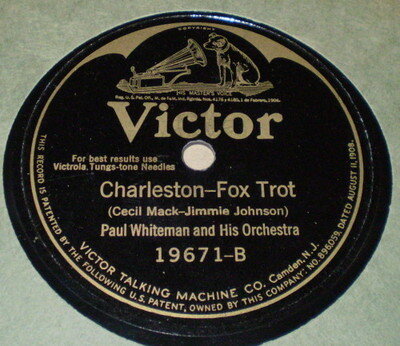 A little later, we can hear descriptions of how to dance the “Varsity Drag,” the “Black Bottom” and of course “The Charleston,” but according to countless record labels, it seems like the most popular dance for generations was the Fox Trot. Even Paul Whiteman’s record of James P. Johnson’s “The Charleston” is labeled “Fox Trot” and the Red Onion Jazz Babies’ “Cake Walking Babies” carries the strange designation “Shimmy Fox Trot!” Occasionally you will see other types of dances listed on the label (like “Stomp”) but the Fox Trot predominated. One exception, many years later, was on the label of Lu Watters’ record of “Doin’ The Hambone.” There is a detailed description of the “Hambone” origin and how to perform the dance!
A little later, we can hear descriptions of how to dance the “Varsity Drag,” the “Black Bottom” and of course “The Charleston,” but according to countless record labels, it seems like the most popular dance for generations was the Fox Trot. Even Paul Whiteman’s record of James P. Johnson’s “The Charleston” is labeled “Fox Trot” and the Red Onion Jazz Babies’ “Cake Walking Babies” carries the strange designation “Shimmy Fox Trot!” Occasionally you will see other types of dances listed on the label (like “Stomp”) but the Fox Trot predominated. One exception, many years later, was on the label of Lu Watters’ record of “Doin’ The Hambone.” There is a detailed description of the “Hambone” origin and how to perform the dance!
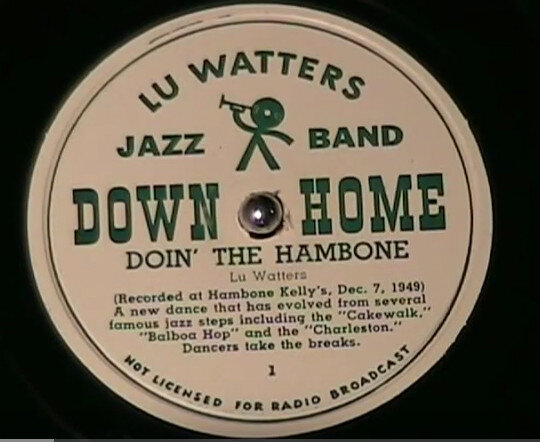 JB: Fantastic! Now, I want to see someone “doin’ the Hambone,” besides the fact the tune is one of my favorite Watters tunes! I’ll finish up the first part of this discussion with a quick story about a ragtime piece that was dedicated to me called “The Oyster Shimmy.” Ragtime composer, and good friend, Galen Wilkes wrote this stomping instrumental in which he musically references an actual whorehouse dance during which naked ladies of the evening danced the “shimmy” while allowing a raw oyster to slither down their bodies. Now that I’ve written that, skip the Hambone dance: I want to see the Oyster dance!
JB: Fantastic! Now, I want to see someone “doin’ the Hambone,” besides the fact the tune is one of my favorite Watters tunes! I’ll finish up the first part of this discussion with a quick story about a ragtime piece that was dedicated to me called “The Oyster Shimmy.” Ragtime composer, and good friend, Galen Wilkes wrote this stomping instrumental in which he musically references an actual whorehouse dance during which naked ladies of the evening danced the “shimmy” while allowing a raw oyster to slither down their bodies. Now that I’ve written that, skip the Hambone dance: I want to see the Oyster dance!
Hal, we could go on for months regarding this topic. I’d love to start Part 2 next month exploring, among other things, the way music and dance interacted in New Orleans back in the early days and the decline, resurgence, subsequent waning and ultimately triumphant reinvention of the relationship between jazz and dance. AND, who knows what other wrinkles we’ll uncover. Sound OK to you?
HS: Absolutely. Count me in!
Visit Jeff Barnhart’s Website (www.jeffbarnhart.com) and Hal Smith’s (www,halsmithmusic.com) for information regarding recordings and upcoming engagements.
Hal Smith is an Arkansas-based drummer and writer. He leads the El Dorado Jazz Band and the
Mortonia Seven and works with a variety of jazz and swing bands. Visit him online at
halsmithmusic.com
Jeff Barnhart is an internationally renowned pianist, vocalist, arranger, bandleader, recording artist, ASCAP composer, educator and entertainer. Visit him online atwww.jeffbarnhart.com. Email: Mysticrag@aol.com






